-
EXECUTIVE SUMMARY
-
SCOPE OF THE REPORT
-
MARKET DEFINITION
-
SCOPE OF THE STUDY
- DEFINITION
- RESEARCH OBJECTIVE
- ASSUMPTIONS
- LIMITATIONS
-
RESEARCH PROCESS
- PRIMARY RESEARCH
- SECONDARY RESEARCH
-
MARKET SIZE ESTIMATION
-
FORECAST MODEL
-
MARKET LANDSCAPE
-
PORTER’S FIVE FORCES ANALYSIS
- THREAT OF NEW ENTRANTS
- BARGAINING POWER OF BUYERS
- THREAT OF SUBSTITUTES
- SEGMENT RIVALRY
- BARGAINING POWER OF BUYERS
-
VALUE CHAIN/SUPPLY CHAIN ANALYSIS
-
MARKET DYNAMICS
-
INTRODUCTION
-
MARKET DRIVERS
-
MARKET RESTRAINTS
-
MARKET OPPORTUNITIES
-
MARKET TRENDS
-
GLOBAL AUTOMOTIVE ENGINE OIL COOLANT MARKET, BY TYPES
-
INTRODUCTION
-
SYNTHETIC ENGINE OIL COOLANT
- MARKET ESTIMATES & FORECAST, 2023-2032
- MARKET ESTIMATES & FORECAST BY REGION, 2023-2032
-
ORGANIC ENGINE OIL COOLANT
- MARKET ESTIMATES & FORECAST, 2023-2032
- MARKET ESTIMATES & FORECAST BY REGION, 2023-2032
-
HYBRID ENGINE OIL COOLANT
- MARKET ESTIMATES & FORECAST, 2023-2032
- MARKET ESTIMATES & FORECAST BY REGION, 2023-2032
-
GLOBAL AUTOMOTIVE ENGINE OIL COOLANT MARKET, BY COOLING MECHANISM
-
INTRODUCTION
-
AIR COOLED
- MARKET ESTIMATES & FORECAST, 2023-2032
- MARKET ESTIMATES & FORECAST BY REGION, 2023-2032
-
WATER COOLED
- MARKET ESTIMATES & FORECAST, 2023-2032
- MARKET ESTIMATES & FORECAST BY REGION, 2023-2032
-
LIQUID COOLED
- MARKET ESTIMATES & FORECAST, 2023-2032
- MARKET ESTIMATES & FORECAST BY REGION, 2023-2032
-
GLOBAL AUTOMOTIVE ENGINE OIL COOLANT MARKET, BY FUNCTION
-
INTRODUCTION
-
ENGINE COOLING
- MARKET ESTIMATES & FORECAST, 2023-2032
- MARKET ESTIMATES & FORECAST BY REGION, 2023-2032
-
ENGINE CORROSION PREVENTION
- MARKET ESTIMATES & FORECAST, 2023-2032
- MARKET ESTIMATES & FORECAST BY REGION, 2023-2032
-
GLOBAL AUTOMOTIVE ENGINE OIL COOLANT MARKET, BY END MARKET
-
INTRODUCTION
-
OEM (ORIGINAL EQUIPMENT MANUFACTURERS)
- MARKET ESTIMATES & FORECAST, 2023-2032
- MARKET ESTIMATES & FORECAST BY REGION, 2023-2032
-
AFTER MARKET
- MARKET MATES & FORECAST, 2023-2032
- MARKET ESTIMATES & FORECAST BY REGION, 2023-2032
-
GLOBAL AUTOMOTIVE ENGINE OIL COOLANT MARKET, BY VEHICLE TYPE
-
INTRODUCTION
-
PASSENGER VEHICLE
- MARKET ESTIMATES & FORECAST, 2023-2032
- MARKET ESTIMATES & FORECAST BY REGION, 2023-2032
-
LIGHT COMMERCIAL VEHICLE
- MARKET MATES & FORECAST, 2023-2032
- MARKET ESTIMATES & FORECAST BY REGION, 2023-2032
-
HEAVY COMMERCIAL VEHICLE
- MARKET MATES & FORECAST, 2023-2032
- MARKET ESTIMATES & FORECAST BY REGION, 2023-2032
-
GLOBAL AUTOMOTIVE ENGINE OIL COOLANT MARKET, BY REGION
-
INTRODUCTION
-
NORTH AMERICA
- MARKET ESTIMATES & FORECAST, 2023-2032
- MARKET ESTIMATES & FORECAST BY TYPES, 2023-2032
- MARKET ESTIMATES & FORECAST BY COOLING MECHANISM, 2023-2032
- MARKET ESTIMATES & FORECAST BY FUNCTION, 2023-2032
- MARKET ESTIMATES & FORECAST BY END MARKET, 2023-2032
- MARKET ESTIMATES & FORECAST BY VEHICLE TYPE, 2023-2032
- U.S.
-
EUROPE
- MARKET ESTIMATES & FORECAST, 2023-2032
- MARKET ESTIMATES & FORECAST BY TYPES, 2023-2032
- MARKET ESTIMATES & FORECAST BY COOLING MECHANISM, 2023-2032
- MARKET ESTIMATES & FORECAST BY FUNCTION, 2023-2032
- MARKET ESTIMATES & FORECAST BY END MARKET, 2023-2032
- MARKET ESTIMATES & FORECAST BY VEHICLE TYPE, 2023-2032
- U.K.
- GERMANY
- REST OF EUROPE
-
ASIA PACIFIC
- MARKET ESTIMATES & FORECAST, 2023-2032
- MARKET ESTIMATES & FORECAST BY TYPES, 2023-2032
- MARKET ESTIMATES & FORECAST BY COOLING MECHANISM, 2023-2032
- MARKET ESTIMATES & FORECAST BY FUNCTION, 2023-2032
- MARKET ESTIMATES & FORECAST BY END MARKET, 2023-2032
- MARKET ESTIMATES & FORECAST BY VEHICLE TYPE, 2023-2032
- INDIA
- REST OF ASIA PACIFIC
-
REST OF THE WORLD
- MARKET ESTIMATES & FORECAST, 2023-2032
- MARKET ESTIMATES & FORECAST BY TYPES, 2023-2032
- MARKET ESTIMATES & FORECAST BY COOLING MECHANISM, 2023-2032
- MARKET ESTIMATES & FORECAST BY FUNCTION, 2023-2032
- MARKET ESTIMATES & FORECAST BY END MARKET, 2023-2032
- MARKET ESTIMATES & FORECAST BY VEHICLE TYPE, 2023-2032
-
COMPETITIVE LANDSCAPE
-
COMPANY PROFILE
-
MAHLE GMBH (GERMANY)
- COMPANY OVERVIEW
- PRODUCTS/SERVICES OFFERING
- FINANCIAL OVERVIEW
- KEY DEVELOPMENTS
- STRATEGY
- SWOT ANALYSIS
-
DANA INCORPORATED (U.S.)
- COMPANY OVERVIEW
- PRODUCTS/SERVICES OFFERING
- FINANCIAL OVERVIEW
- KEY DEVELOPMENTS
- STRATEGY
- SWOT ANALYSIS
-
CASTROL (U.K.)
- COMPANY OVERVIEW
- PRODUCTS/SERVICES OFFERING
- FINANCIAL OVERVIEW
- KEY DEVELOPMENTS
- STRATEGY
- SWOT ANALYSIS
-
FLUIDYNE CONTROL SYSTEMS (P) LTD (INDIA)
- COMPANY OVERVIEW
- PRODUCTS/SERVICES OFFERING
- FINANCIAL OVERVIEW
- KEY DEVELOPMENTS
- STRATEGY
- SWOT ANALYSIS
-
TITANX ENGINE COOLING, INC. (U.S.)
- COMPANY OVERVIEW
- PRODUCTS/SERVICES OFFERING
- FINANCIAL OVERVIEW
- KEY DEVELOPMENTS
- STRATEGY
- SWOT ANALYSIS
-
PWR HOLDINGS (AUSTRALIA)
- COMPANY OVERVIEW
- PRODUCTS/SERVICES OFFERING
- FINANCIAL OVERVIEW
- KEY DEVELOPMENTS
- STRATEGY
- SWOT ANALYSIS
-
SETRAB (U.S.)
- COMPANY OVERVIEW
- PRODUCTS/SERVICES OFFERING
- FINANCIAL OVERVIEW
- KEY DEVELOPMENTS
- STRATEGY
- SWOT ANALYSIS
-
AMSOIL INC. (U.S.)
- COMPANY OVERVIEW
- PRODUCTS/SERVICES OFFERING
- FINANCIAL OVERVIEW
- KEY DEVELOPMENTS
- STRATEGY
- SWOT ANALYSIS
-
BLUE STAR LUBRICATION TECHNOLOGY LLC (U.S.)
- COMPANY OVERVIEW
- PRODUCTS/SERVICES OFFERING
- FINANCIAL OVERVIEW
- KEY DEVELOPMENTS
- STRATEGY
- SWOT ANALYSIS
-
VALVOLINE (U.S.)
- COMPANY OVERVIEW
- PRODUCTS/SERVICES OFFERING
- FINANCIAL OVERVIEW
- KEY DEVELOPMENTS
- STRATEGY
- SWOT ANALYSIS
-
ROYAL DUTCH SHELL (U.K.)
- COMPANY OVERVIEW
- PRODUCTS/SERVICES OFFERING
- FINANCIAL OVERVIEW
- KEY DEVELOPMENTS
- STRATEGY
- SWOT ANALYSIS
-
CHEVRON CORPORATION (U.S.).
- COMPANY OVERVIEW
- PRODUCTS/SERVICES OFFERING
- FINANCIAL OVERVIEW
- KEY DEVELOPMENTS
- STRATEGY
- SWOT ANALYSIS
-
LIST OF TABLES
-
GLOBAL AUTOMOTIVE ENGINE OIL COOLANT MARKET: BY REGION, 2023-2032
-
NORTH AMERICA AUTOMOTIVE ENGINE OIL COOLANT MARKET: BY COUNTRY, 2023-2032
-
EUROPE AUTOMOTIVE ENGINE OIL COOLANT MARKET: BY COUNTRY, 2023-2032
-
ASIA PACIFIC AUTOMOTIVE ENGINE OIL COOLANT MARKET: BY COUNTRY, 2023-2032
-
ROW AUTOMOTIVE ENGINE OIL COOLANT MARKET: BY COUNTRY, 2023-2032
-
GLOBAL AUTOMOTIVE ENGINE OIL COOLANT MARKET, BY TYPES, BY REGIONS, 2023-2032
-
NORTH AMERICA AUTOMOTIVE ENGINE OIL COOLANT MARKET, BY TYPES, BY COUNTRY, 2023-2032
-
EUROPE AUTOMOTIVE ENGINE OIL COOLANT MARKET, BY TYPES, BY COUNTRY, 2023-2032
-
ASIA PACIFIC AUTOMOTIVE ENGINE OIL COOLANT MARKET BY TYPES, BY COUNTRY, 2023-2032
-
ROW AUTOMOTIVE ENGINE OIL COOLANT MARKET BY TYPES, BY COUNTRY, 2023-2032
-
AUTOMOTIVE ENGINE OIL COOLANT BY FUNCTIONMARKET: BY REGIONS, 2023-2032
-
NORTH AMERICA AUTOMOTIVE ENGINE OIL COOLANT MARKET BY COOLING MECHANISM: BY COUNTRY, 2023-2032
-
EUROPE AUTOMOTIVE ENGINE OIL COOLANT MARKET BY COOLING MECHANISM: BY COUNTRY, 2023-2032
-
ASIA PACIFIC AUTOMOTIVE ENGINE OIL COOLANT MARKET BY COOLING MECHANISM: BY COUNTRY, 2023-2032
-
ROW AUTOMOTIVE ENGINE OIL COOLANT MARKET BY COOLING MECHANISM: BY COUNTRY, 2023-2032
-
AUTOMOTIVE ENGINE OIL COOLANT BY COOLING MECHANISM MARKET: BY REGIONS, 2023-2032
-
NORTH AMERICA AUTOMOTIVE ENGINE OIL COOLANT MARKET BY COOLING MECHANISM: BY COUNTRY, 2023-2032
-
EUROPE AUTOMOTIVE ENGINE OIL COOLANT MARKET BY COOLING MECHANISM: BY COUNTRY, 2023-2032
-
ASIA PACIFIC AUTOMOTIVE ENGINE OIL COOLANT MARKET BY COOLING MECHANISM: BY COUNTRY, 2023-2032
-
ROW AUTOMOTIVE ENGINE OIL COOLANT MARKET BY COOLING MECHANISM: BY COUNTRY, 2023-2032
-
AUTOMOTIVE ENGINE OIL COOLANT BY VEHICLE TYPE MARKET: BY REGIONS, 2023-2032
-
NORTH AMERICA AUTOMOTIVE ENGINE OIL COOLANT MARKET BY VEHICLE TYPE: BY COUNTRY, 2023-2032
-
EUROPE AUTOMOTIVE ENGINE OIL COOLANT MARKET BY VEHICLE TYPE: BY COUNTRY, 2023-2032
-
ASIA PACIFIC AUTOMOTIVE ENGINE OIL COOLANT MARKET BY VEHICLE TYPE: BY COUNTRY, 2023-2032
-
ROW AUTOMOTIVE ENGINE OIL COOLANT MARKET BY VEHICLE TYPE: BY COUNTRY, 2023-2032
-
GLOBAL AUTOMOTIVE ENGINE OIL COOLANT MARKET: BY REGION, 2023-2032
-
GLOBAL AUTOMOTIVE ENGINE OIL COOLANT MARKET: BY TYPES, 2023-2032
-
GLOBAL AUTOMOTIVE ENGINE OIL COOLANT MARKET: BY VEHICLE TYPE, 2023-2032
-
GLOBAL AUTOMOTIVE ENGINE OIL COOLANT MARKET: BY END MARKET, 2023-2032
-
GLOBAL AUTOMOTIVE ENGINE OIL COOLANT MARKET: BY FUNCTION, 2023-2032
-
NORTH AMERICA AUTOMOTIVE ENGINE OIL COOLANT MARKET, BY COUNTRY
-
NORTH AMERICA AUTOMOTIVE ENGINE OIL COOLANT MARKET, BY TYPES
-
NORTH AMERICA AUTOMOTIVE ENGINE OIL COOLANT MARKET, BY COOLING MECHANISM
-
NORTH AMERICA AUTOMOTIVE ENGINE OIL COOLANT MARKET, BY FUNCTION
-
NORTH AMERICA AUTOMOTIVE ENGINE OIL COOLANT MARKET, BY VEHICLE TYPE
-
EUROPE: AUTOMOTIVE ENGINE OIL COOLANT MARKET, BY COUNTRY
-
EUROPE: AUTOMOTIVE ENGINE OIL COOLANT MARKET, BY FUNCTION
-
EUROPE: AUTOMOTIVE ENGINE OIL COOLANT MARKET, BY END MARKET
-
EUROPE: AUTOMOTIVE ENGINE OIL COOLANT MARKET, BY COOLING MECHANISM
-
EUROPE: AUTOMOTIVE ENGINE OIL COOLANT MARKET, BY VEHICLE TYPE
-
ASIA PACIFIC: AUTOMOTIVE ENGINE OIL COOLANT MARKET, BY COUNTRY
-
ASIA PACIFIC: AUTOMOTIVE ENGINE OIL COOLANT MARKET, BY FUNCTION
-
ASIA PACIFIC: AUTOMOTIVE ENGINE OIL COOLANT MARKET, BY TYPES
-
ASIA PACIFIC: AUTOMOTIVE ENGINE OIL COOLANT MARKET, BY FUNCTION
-
ASIA PACIFIC: AUTOMOTIVE ENGINE OIL COOLANT MARKET, BY VEHICLE TYPE
-
ROW: AUTOMOTIVE ENGINE OIL COOLANT MARKET, BY REGION
-
ROW AUTOMOTIVE ENGINE OIL COOLANT MARKET, BY APPLICATION
-
ROW AUTOMOTIVE ENGINE OIL COOLANT MARKET, BY FUNCTION
-
ROW AUTOMOTIVE ENGINE OIL COOLANT MARKET, BY END MARKETS
-
ROW AUTOMOTIVE ENGINE OIL COOLANT MARKET, BY VEHICLE TYPE
-
-
LIST OF FIGURES
-
RESEARCH PROCESS OF MRFR
-
TOP DOWN & BOTTOM UP APPROACH
-
MARKET DYNAMICS
-
IMPACT ANALYSIS: MARKET DRIVERS
-
IMPACT ANALYSIS: MARKET RESTRAINTS
-
PORTER’S FIVE FORCES ANALYSIS
-
VALUE CHAIN ANALYSIS
-
GLOBAL AUTOMOTIVE ENGINE OIL COOLANT MARKET SHARE, BY APPLICATION, 2023 (%)
-
GLOBAL AUTOMOTIVE ENGINE OIL COOLANT MARKET, BY APPLICATION, 2023-2032 (USD MILLION)
-
GLOBAL AUTOMOTIVE ENGINE OIL COOLANT MARKET SHARE, BY END MARKETS, 2023 (%)
-
GLOBAL AUTOMOTIVE ENGINE OIL COOLANT MARKET, BY END MARKETS, 2023-2032 (USD MILLION)
-
GLOBAL AUTOMOTIVE ENGINE OIL COOLANT MARKET SHARE, BY END MARKETS, 2023 (%)
-
GLOBAL AUTOMOTIVE ENGINE OIL COOLANT MARKET, BY END MARKETS, 2023-2032 (USD MILLION)
-
GLOBAL AUTOMOTIVE ENGINE OIL COOLANT MARKET SHARE, BY VEHICLE TYPE, 2023 (%)
-
GLOBAL AUTOMOTIVE ENGINE OIL COOLANT MARKET, BY VEHICLE TYPE, 2023-2032 (USD MILLION
-
GLOBAL AUTOMOTIVE ENGINE OIL COOLANT MARKET SHARE (%), BY REGION, 2023
-
GLOBAL AUTOMOTIVE ENGINE OIL COOLANT MARKET, BY REGION, 2023-2032 (USD MILLION)
-
NORTH AMERICA AUTOMOTIVE ENGINE OIL COOLANT MARKET SHARE (%), 2023
-
NORTH AMERICA AUTOMOTIVE ENGINE OIL COOLANT MARKET BY COUNTRY, 2023-2032 (USD MILLION)
-
EUROPE AUTOMOTIVE ENGINE OIL COOLANT MARKET SHARE (%), 2023
-
EUROPE AUTOMOTIVE ENGINE OIL COOLANT MARKET BY COUNTRY, 2023-2032 (USD MILLION)
-
ASIA PACIFIC AUTOMOTIVE ENGINE OIL COOLANT MARKET SHARE (%), 2023
-
ASIA PACIFIC AUTOMOTIVE ENGINE OIL COOLANT MARKET BY COUNTRY, 2023-2032 (USD MILLION)
-
REST OF THE WORLD AUTOMOTIVE ENGINE OIL COOLANT MARKET SHARE (%), 2023
-
REST OF THE WORLD AUTOMOTIVE ENGINE OIL COOLANT MARKET BY COUNTRY, 2023-2032 (USD MILLION)
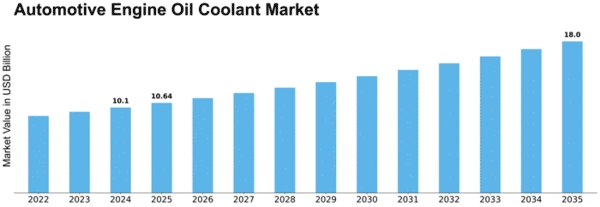

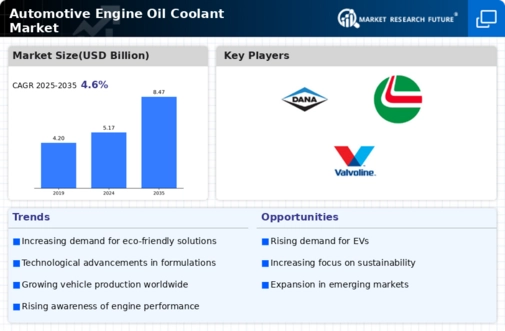
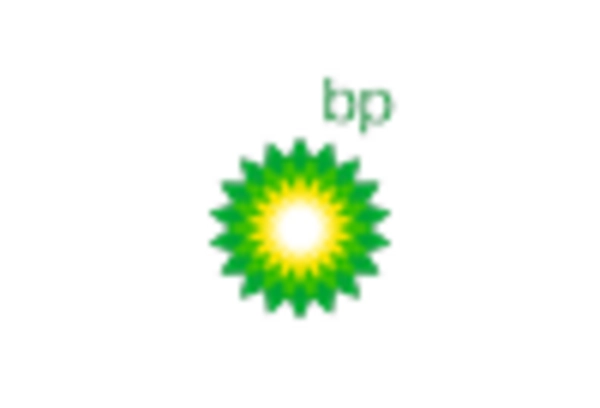
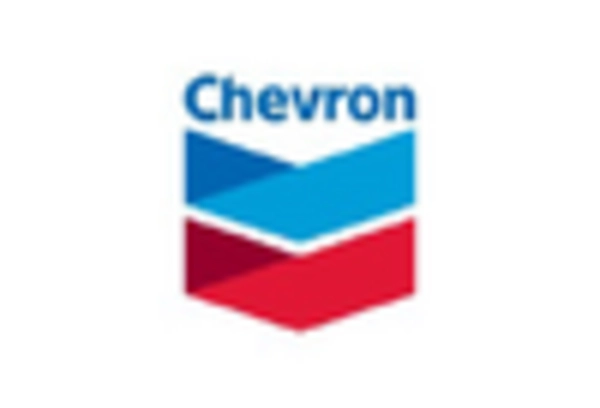

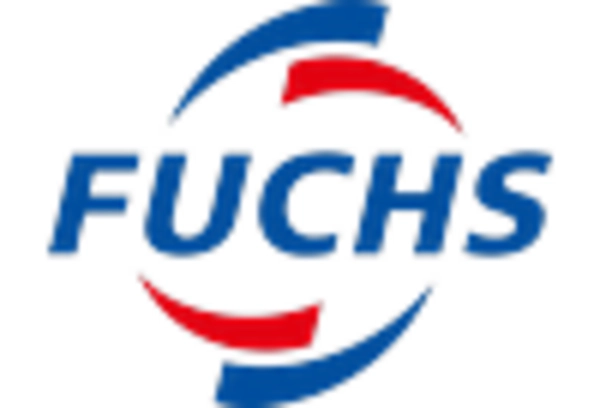
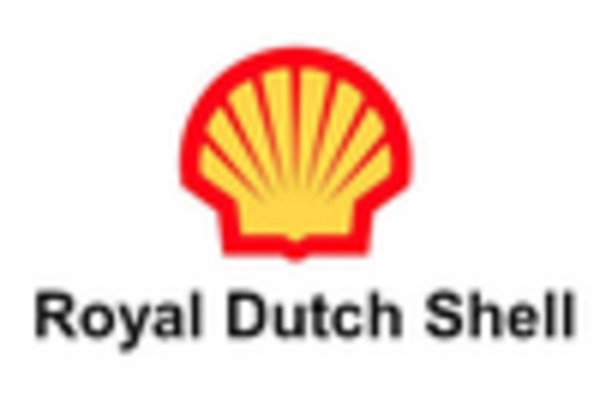










Leave a Comment